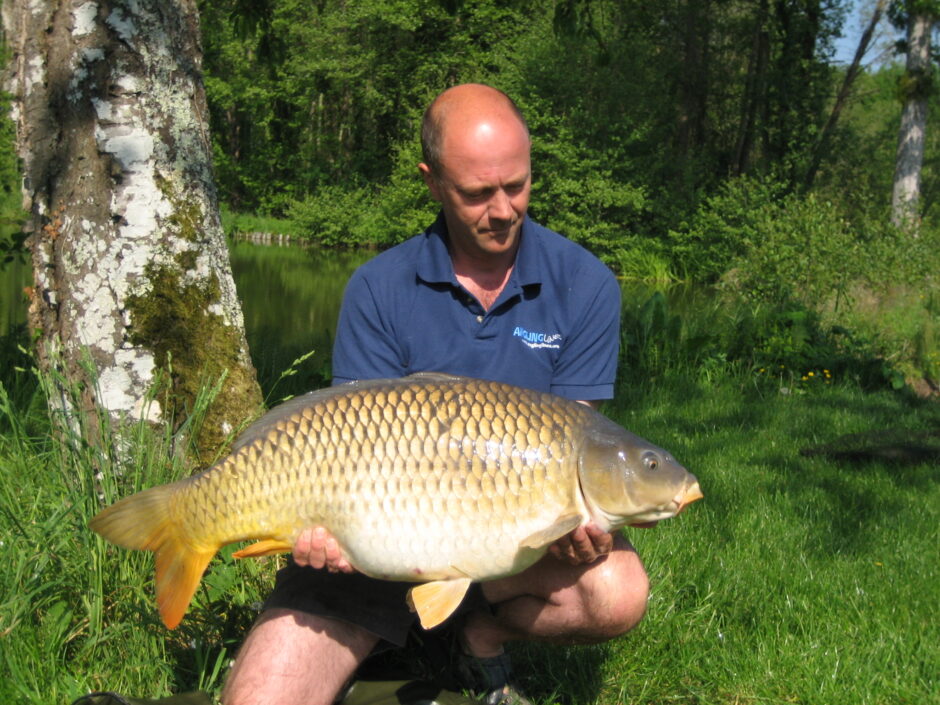Carp Removal Perspectives and Strategies
 31lb common carp, Bletiere, France. (Credit: David Keep via Flickr CC BY 2.0)
31lb common carp, Bletiere, France. (Credit: David Keep via Flickr CC BY 2.0)Invasive carp can wreak havoc on established ecosystems and are a threat to fisheries built around native species. Non-native carp introduce a host of issues as they outcompete other species for food and space—decreasing the available habitat for native species. Previous research has also suggested that the presence of carp may lower water quality, again impacting the suitability of the habitat and possibly killing off more sensitive species like freshwater mussels.
Understanding the impacts of carp, many resource departments have instituted carp removal programs in order to help protect the native ecosystem. Some of these carp removal programs enlist the help of anglers who are interested in catching the large fish, while others rely on electrofishing to remove carp from specific areas individually.
Carp Removal Strategies
Minnesota lakes are inundated with invasive common carp that have displaced native species since their arrival. As a result, the University of Minnesota has been leading a management strategy that manages common carp populations using biocontrol and toxins.
The plan includes four phases:
- Using bluegills as a means of controlling the number of carp that hatch each year as well as preventing recruitment, as the fry often do not survive
- Baiting carp with corn pellets laced with antimycin-a, a natural fish toxin, without harming native species
- Researching carp personality traits in order to better optimize strategies outlined in phases 1 and 2
- Testing if carp can be conditioned to associate sound with bait in order to optimize the use of the toxins.
While these phases have been successful thus far, historical attempts to remove species entirely have been largely unsuccessful. The USGS states, “Eradicating an established population of invasive carp would be extremely difficult and expensive, if possible at all.”
That warning being said, the USGS does believe that potential control methods can be successful though they will likely be unable to totally remove the invasive species. “Fish poisons, physical barriers, physical removal, habitat alteration, or the addition of predators, parasites, or pathogens,” are all listed as potential control methods, according to the USGS.
In contrast, some research has claimed that the removal of an invasive species is possible. In 2020, a researcher reported to the Environmental Monitor, “There have been many, many successful eradications, but most of them have been on tiny islands and not in the largest lakes in the world,” states Michael Jones, emeritus professor of fisheries and wildlife at Michigan State University.
Conclusion
While total removal may be an unrealistic goal in terms of larger lake systems, control of invasive species can help limit the severity of their impact on systems. Therefore, while the task may seem hopeless with no end in sight, control strategies have the ability to protect fisheries from collapsing due to the new addition. While there is still a great deal to learn about the impact of carp, whole-lake studies and continuous research are the key to developing new strategies.
Carp removal, as with the removal of all invasive species, can be a divisive environmental strategy. For example, some have proposed in response to invasive lamprey in the Great Lakes that the species not be targeted by resource managers using methods like toxins and instead allow the population to be controlled through more natural means. In some cases, these means may have limited success, allowing the invasive species to grow their population. In such cases, managers must face the difficult decision of how to respond to species that threaten natural systems that may be a valuable and necessary resource for surrounding communities.



0 comments